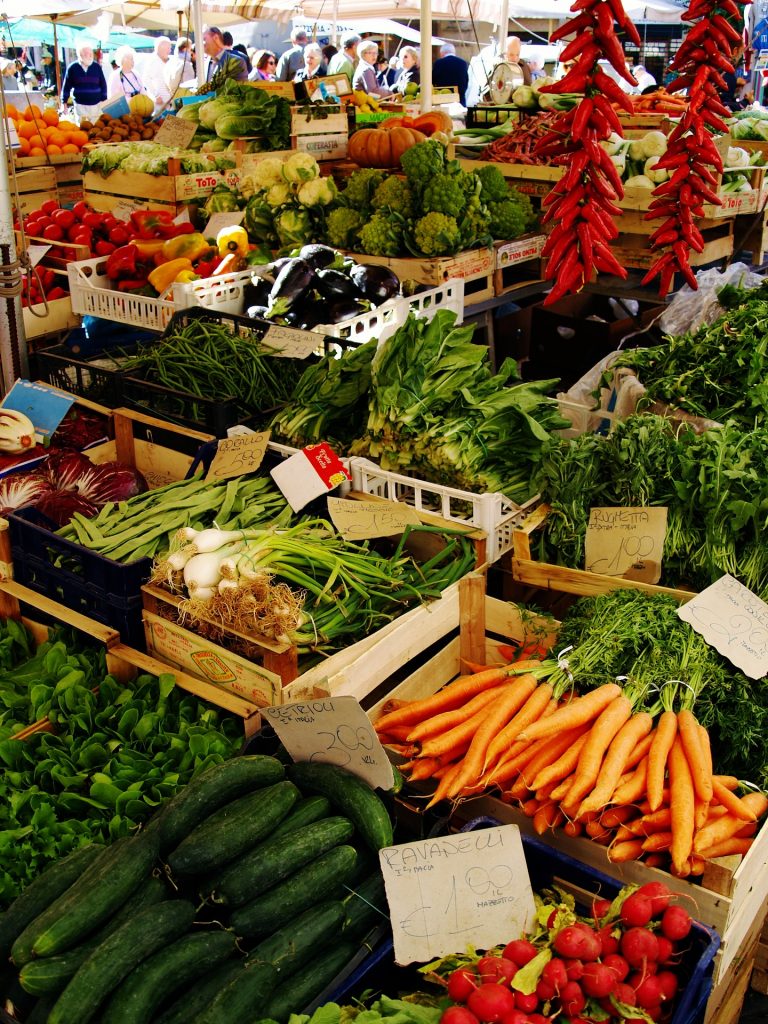Farm Stands and Farmer’s Markets Posted by Gary Locke on Jun 13, 2019 in Culture
A sure sign of summer, and one of the best things about the season, is a farm stand. Like everything else which goes dark and quiet during the cold months, the reemergence of a local farm stand is greeted with smiles and excitement by many. Fresh vegetables, fruit, plants, and flowers appear near the side of the road, usually just outside of a humble building that’s part of a working farm. It is a welcome burst of color and fragrances after the gray and bleak winter and early spring.
In addition to farm stands, we also have farmer’s markets in the U.S. Though similar, the farm stand should not be confused with a farmer’s market. A farm stand is usually run by just one farmer. A farmer’s market is a cooperative marketplace, or a co-op, where many independent farmers sell their produce directly to the public. They are often larger than many farm stands. In fact, they are more like a lot of little farm stands combined. Most farm stands are located at or near the farm. Farmer’s markets are more likely to be found at a regional location where the various vendors can set up stalls to sell their wares. And, while most farm stands are open every day, farmer’s markets are usually open on maybe just one or two days a week.
You may also find more than just produce from a farm at these places. Taking inspiration from European markets, you can often find fresh fish, locally produced cheeses, baked goods, or pretty much anything locally sourced and crafted at farmer’s markets. What you won’t find at a market, unlike at many farm stands, is some of the same types of produce found in a grocery store.
That’s right, many farm stands sell produce and other products which you could also find at a larger grocery store. This is because one local farmer is unlikely to grow enough of a variety of products to cater to everyone. One of my local stands sells tomatoes throughout the summer, because lettuce is abundant all summer and people want tomatoes with their salads. But, when tomato season is at its peak, people from miles around come to his stand to buy his magnificent selection of fresh heirloom tomatoes. My best advice? Look for little signs at the farm stand which say, “Our Own…” indicating that it was grown at the farm.
What often distinguishes the farm stand produce from a grocery store’s is the attention to what is sold. The farm stand owner often personally selects the produce that he or she will purchase for resale. This is a luxury only available to small business owners like independent farmers. The manager at a supermarket has to take delivery of what his supplier brings him.
The bigger the farm, the bigger the selection at the farm stand. Herbs and fresh bouquets from flower beds are found at many good stands. Many farms also have orchards growing apples, pears, and/or peaches. Your farm stand may represent a working farm which even has its own dairy. You could get fresh milk, eggs, butter, cheese – even meat.
More likely, though, the farm stand will supplement its offerings with things made by friends and family. My sister makes cookies, candies, and mixed nuts for a farm stand just a couple of miles from her house. Preserves like strawberry jam or pickled onions are a staple at many stands. Breads, pastries, and pies often line a shelf near the cash register. All of these may be made by someone the farmer knows personally.
Whether you are buying from a farmer’s market or a local farm stand, you can be certain that the quality is very good. Now, if you’ll excuse me, I am going to eat a fresh strawberry.

Build vocabulary, practice pronunciation, and more with Transparent Language Online. Available anytime, anywhere, on any device.




